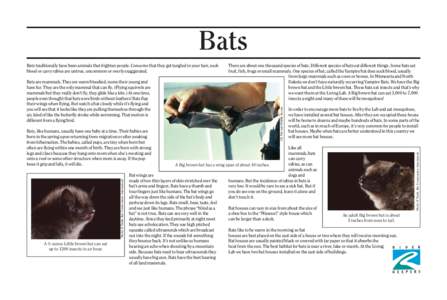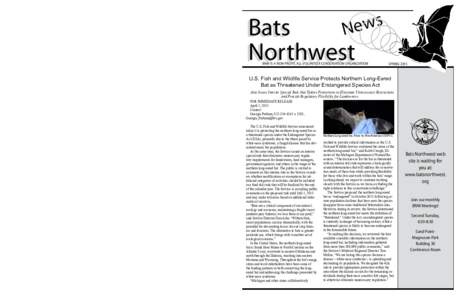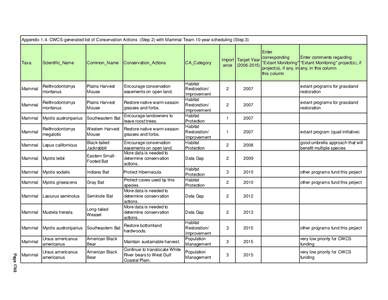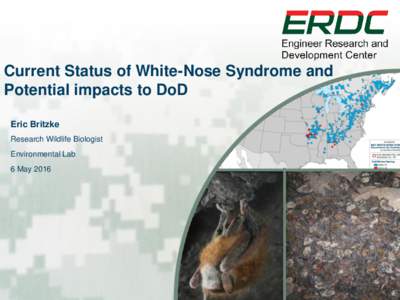<--- Back to Details
| First Page | Document Content | |
|---|---|---|
 Date: 2014-11-19 10:00:25Mouse-eared bats Animal flight Pollinators Vesper bats White nose syndrome Little brown bat Indiana bat Eastern Pipistrelle Animal echolocation Bats Night Biology |
Add to Reading List |
 | Bats Merlin D Tuttle, Bat Conservation International Bats, like humans, usually have one baby at a time. Their babies are born in the spring upon returning from migration or after awakingDocID: 1rmNJ - View Document |
 | Become a Bats Northwest Member Join us in the adventure to learn more about our bat neighbors!DocID: 1qA82 - View Document |
 | ARKive image GES143493 - Northern long-eared batDocID: 1qzIi - View Document |
 | Appendix 1.4. CWCS-generated list of Conservation Actions (Step 2) with Mammal Team 10-year scheduling (Step 3) Taxa Scientific_NameDocID: 1pW6q - View Document |
 | Current Status of White-Nose Syndrome and Potential impacts to DoD Eric Britzke Research Wildlife Biologist Environmental Lab 6 May 2016DocID: 1pOK3 - View Document |
 Working the Night Shift – Biometric Clues (Eastern U.S.) Background EXPLORATION QUESTION “Why do we need to study bats and what methods can we use?”
Working the Night Shift – Biometric Clues (Eastern U.S.) Background EXPLORATION QUESTION “Why do we need to study bats and what methods can we use?”